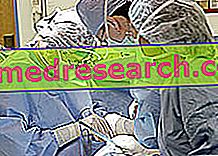
The biceps femoris muscle occupies the posterior and lateral region of the thigh and is composed of two heads, one long and one short.
The long head originates from the upper part of the ischial tuberosity with a common head to the semitendinosus muscle. The short head originates from the middle third of the lateral lip of the femur line and from the lateral intermuscular septum.
The two heads converge in a single belly that is inserted on the head of the fibula, on the lateral condyle of the tibia and on the contiguous parts of the face of the leg.
With its action it flexes and rotates the leg externally and extends the thigh. It is the only external rotator of the knee joint and is the antagonist of all internal rotators. Like all the other flexors of the leg it counteracts the elevation of the lower limb with a straight leg and the flexion of the torso forward (always with a straight leg).
The long head together with the semitendinosus and the semimembranosus constitutes the muscular group called ischiocrurali. These three muscles divide: origin (ischial tuberosity), innervation (tibial nerve), biarticularity and function (leg flexor and extensor of the thigh).
It is innervated by the tibial nerve (long head) and the common peroneal nerve (short head) (L4-S1).
ORIGIN Long head: upper part of the ischial tuberosity Short head: lateral lip of the line of the femur and from the lateral intermuscular septum |  |
| INSERTION With a common tendon on the styloid process of the head of the fibula, on the lateral condyle of the tibia and on the contiguous parts of the face of the leg | |
| ACTION The leg flexes and rotates externally, extends the thigh | |
| INNERVATION NIBE TIBIALE (long head) and NERVE PERONIERO COMUNE (short head) (L4-S1) |
| Upper limb | Lower limb | Trunk | Abdomen | Articles |



